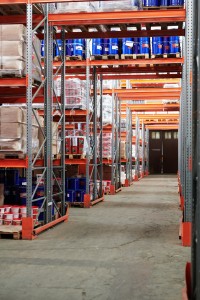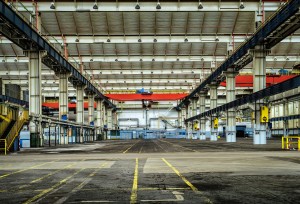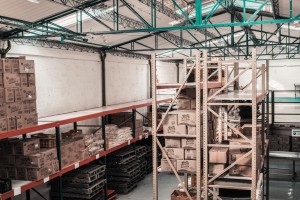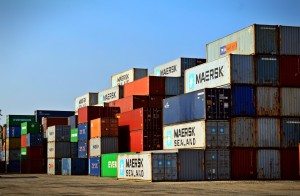
 Become a PowerPoint Guru by Dave Tracy
Become a PowerPoint Guru by Dave Tracy
Learn the methodologies, frameworks, and tricks used by Management Consultants to create executive presentations in the business world.

 Become a PowerPoint Guru by Dave Tracy
Become a PowerPoint Guru by Dave Tracy
 Majority of pharmaceutical companies are persisting with decade old processes and routines. They have transactional relationships with suppliers, lack of concerted efforts to progress ahead, and no vision to reap productivity rewards. The reasons for continuing with these traditional practices include tax regimes, regulatory hurdles, and stable revenues from customers dependent on existing industry offerings.
Majority of pharmaceutical companies are persisting with decade old processes and routines. They have transactional relationships with suppliers, lack of concerted efforts to progress ahead, and no vision to reap productivity rewards. The reasons for continuing with these traditional practices include tax regimes, regulatory hurdles, and stable revenues from customers dependent on existing industry offerings.
Disruption—spurred by technological Innovation, fluctuating customer demand patterns, and more agile and creative competitors—has forced the pharmaceutical sector to think of ways to face these challenges, survive, and thrive. One of the strategic response to this competitive disruption—by leading manufacturers—is to reexamine their manufacturing operations, embracing agile principles, reducing costs, revolutionizing procurement and distribution functions, and striving to achieve Operational Excellence. Above all, they view their supply chain not as a cost center, but as a source of Competitive Advantage.
The increasing influence of generic drugs is another challenge for large multinational pharmaceuticals. In the past, multinational companies (MNCs) dominated the market owing to possessing a number of high-market drugs protected under patents. Patent protection afforded them the leverage to set high prices on each product. The scenario is fast changing. Expiry of high-market drugs patents is creating a huge opening for generic competitors and the space is widening compared to the past.
In the past, pharma manufacturers were able to counter the threat to generic competitors by developing new drugs. However, this is becoming difficult and the new drugs pipeline is shrinking with time. R&D expenditure has continuously gone up, however, drug approval from the authorities has not kept paced with it. It has rather declined, straining the MNCs further.
Other disruptive factors include newer distribution methods, public health plans favoring generic drugs over proprietary ones due to cost effectiveness, the newer internet / mail delivery options displacing traditional pharmacy dispensing options. Pharmacy chains—e.g. Walgreens—have given a leverage to the retailers to negotiate reduction in medicine prices where again generics have an edge over MNCs.
Moreover, the trend of drugs purchased through a formal tender process is increasingly gaining acceptance, adding to the difficulties of large pharma manufacturers. Additionally, strict regulations are minimizing the cost benefits that MNCs traditionally enjoyed in the past.
All these factors have forced the pharma companies to reorganize their Supply Chains in a more flexible manner to manage complexities, bring in efficiency, and contain costs to compete in off-patent segment with generics.
Reorganization of a conventional pharmaceutical Supply Chain into an Agile, flexible, and inexpensive Supply Chain warrants developing Operational Excellence and Cost Reduction competencies. This necessitates 5 strategic steps (phases):
Let’s discuss these steps in detail.
Large pharma MNCs typically maintain the Supply Chain of all of their drugs with a single strategy of retaining high inventory and service levels. Such a strategy can only work for products having a high profit margin, in a static environment. It is not suitable for low-margin products, contrasting environments, and does not take into account fluctuations in demand patterns. An appropriate approach is to implement a multiple Supply Chains model based on individual products and markets.
The 2nd step in Pharma Supply Chain Reinvention involves quick distribution of different versions of products to markets based on demand. For low-margin products with high demand volatility, the Supply Chain Management Strategy should be to employ Pack-to-Order system. The Pack-to-Order approach involves developing a version of a product that could be timely dispatched to several markets of varying demand across the globe. This approach coupled with Postponement Strategy—where products are packed to order during later stages of production based on regional demand—assists in trimming down the inventory, reducing complicatedness, and enhancing Supply Chain nimbleness to demand volatility.
Interested in learning more about how to reinvent your Pharmaceutical Supply Chain? You can download an editable PowerPoint on Pharmaceutical Supply Chain Reinvention here on the Flevy documents marketplace.
You can download in-depth presentations on this and hundreds of similar business frameworks from the FlevyPro Library. FlevyPro is trusted and utilized by 1000s of management consultants and corporate executives. Here’s what some have to say:
“My FlevyPro subscription provides me with the most popular frameworks and decks in demand in today’s market. They not only augment my existing consulting and coaching offerings and delivery, but also keep me abreast of the latest trends, inspire new products and service offerings for my practice, and educate me in a fraction of the time and money of other solutions. I strongly recommend FlevyPro to any consultant serious about success.”
– Bill Branson, Founder at Strategic Business Architects
“As a niche strategic consulting firm, Flevy and FlevyPro frameworks and documents are an on-going reference to help us structure our findings and recommendations to our clients as well as improve their clarity, strength, and visual power. For us, it is an invaluable resource to increase our impact and value.”
– David Coloma, Consulting Area Manager at Cynertia Consulting
“FlevyPro has been a brilliant resource for me, as an independent growth consultant, to access a vast knowledge bank of presentations to support my work with clients. In terms of RoI, the value I received from the very first presentation I downloaded paid for my subscription many times over! The quality of the decks available allows me to punch way above my weight – it’s like having the resources of a Big 4 consultancy at your fingertips at a microscopic fraction of the overhead.”
– Roderick Cameron, Founding Partner at SGFE Ltd
 Technological advancement has come a long way. Artificial Intelligence is taking charge of a number of repetitive logistics tasks. Organizations are benefiting from Automation in streamlining their cumbersome processes and cutting down delivery times.
Technological advancement has come a long way. Artificial Intelligence is taking charge of a number of repetitive logistics tasks. Organizations are benefiting from Automation in streamlining their cumbersome processes and cutting down delivery times.
Automation is profoundly affecting the way Logistics are handled. It is disrupting the entire Logistics Supply Chain, not just the warehousing, picking, and sorting functions. The impact of Automation on roads, rails, and ports is immense. Ports are increasingly embracing Automation, but they haven’t yet started getting the return on their investments.
In Logistics, ocean and air shipment has potential for Automation—which is certainly under way—but its effect on enhancing throughput is yet to be seen. Logistics operations are being transformed at quite a pace with new models, concepts, and offerings evolving rapidly. With the current pace of technology evolution, experts believe Logistics operations would be done autonomously in the not too-distant future.
The COVID-19 pandemic has disrupted businesses and industries alike significantly. Businesses are trying to grapple with the ambiguities the situation has presented to them. Automation is being viewed by many Logistics companies to be the only option to prepare for and survive in the future.
Logistics companies are exploring ways to automate their businesses mainly due to 3 trends that are shaping their industry. These 3 trends include:
Let’s talk about these trends in a bit detail.
Labor markets are stiffening globally with lowest unemployment rates and high wages. Online retailers everywhere have a huge demand for skilled workers. This demand rise steeply in the holiday season. A sizable workforce is engaged in Supply Chain related jobs—about 4 million only in the US as packers, handlers, and supervisors in warehouses. This translates to $100 billion in payroll costs. Automation will definitely reduce this cost head. However, it will have implications for the workforce.
Another trend that is affecting the Logistics industry immensely is the explosive growth of E-commerce retailers. The sales of e-tailers are growing at a consistent pace every year. With this trend, the range of products has grown considerably, benefiting the logistics businesses. Logistic companies are making significant profit from this large volume of online shipment orders—saving about $12 to $20 on a sale of $100.
Interested in learning more about the trends that are shaping the Logistics operations? You can download an editable PowerPoint presentation on 3 Trends Driving Logistics Automation here on the Flevy documents marketplace.
You can download in-depth presentations on this and hundreds of similar business frameworks from the FlevyPro Library. FlevyPro is trusted and utilized by 1000s of management consultants and corporate executives. Here’s what some have to say:
“My FlevyPro subscription provides me with the most popular frameworks and decks in demand in today’s market. They not only augment my existing consulting and coaching offerings and delivery, but also keep me abreast of the latest trends, inspire new products and service offerings for my practice, and educate me in a fraction of the time and money of other solutions. I strongly recommend FlevyPro to any consultant serious about success.”
– Bill Branson, Founder at Strategic Business Architects
“As a niche strategic consulting firm, Flevy and FlevyPro frameworks and documents are an on-going reference to help us structure our findings and recommendations to our clients as well as improve their clarity, strength, and visual power. For us, it is an invaluable resource to increase our impact and value.”
– David Coloma, Consulting Area Manager at Cynertia Consulting
“As a small business owner, the resource material available from FlevyPro has proven to be invaluable. The ability to search for material on demand based our project events and client requirements was great for me and proved very beneficial to my clients. Importantly, being able to easily edit and tailor the material for specific purposes helped us to make presentations, knowledge sharing, and toolkit development, which formed part of the overall program collateral. While FlevyPro contains resource material that any consultancy, project or delivery firm must have, it is an essential part of a small firm or independent consultant’s toolbox.”
– Michael Duff, Managing Director at Change Strategy (UK)
 Shortage of labor, intensified demand from e-tailers (online retailers), and technological disruption is forcing organizations in the Logistics and Warehousing industry to embrace technology, particularly Automation.
Shortage of labor, intensified demand from e-tailers (online retailers), and technological disruption is forcing organizations in the Logistics and Warehousing industry to embrace technology, particularly Automation.
An investment in automating the picking, packing, sorting, storing, and shipping items can yield high returns for organizations. Warehouses that will sort out the dynamics of e-commerce, select the ideal technology to implement, and eliminate uncertainties in their supplier contracts will outpace others.
Automation is facilitating the Warehousing operations predominantly by:
In these two categories, there are 10 technologies that are fast disrupting the Supply Chain function and creating a breakthrough for warehouses. These include:
Let’s discuss a few of these disruptive technologies in detail.
Multi-shuttle systems (MSS) are employed to store and retrieve goods automatically—using automated storage and retrieval system (AS/RS). This system is able to transport goods 3 dimensionally (on pallets), and is instrumental in enhancing the throughput, flexibility and efficiency levels.
MSS consists of 3 modules, coordinated by a software module: a Shuttle car powered by power caps for 24-hour operations and moved by powerful motors, high-performance vertical lifts, and a special carrier to move the shuttle car to the exact location. Communication in the multilevel systems’ carrier and shuttles is managed by radio links, whereas the movement is controlled by an integrated control system.
Multilevel Shuttle Storage System is ideal for cold storage, buffer storage, dispatching warehouses, commissioning warehouses, supply and distribution centers, and factories.
MSS offers a number of benefits, e.g.:
Optical Recognition and Sensor technology expedites processes and increases productivity. This technology is at the foundation of IoT, smart cities, automobiles and laser-guided vehicles, smartphones, wearable technologies, drones, barcode readers, and more.
Optical Recognition devices use a light source to read characters and barcodes. They then convert these characters into digital data. Optical Recognition devices scan items. At times, this scanning is done on 6 axes. The character recognition software then relates this image to the shapes of individual characters.
Optical recognition devices today use sensors to detect and respond to a specified input—light, sound, motion, pressure, temperature. Once an input is received, a sensor either produces a resulting output—in the form of a light or alarm—or forward the information received to a network for processing.
Optical recognition sensors facilitate in:
Connected Conveyor Systems are useful in transporting heavy or bulky materials. These systems allow quick and efficient transport of a variety of materials (e.g. totes, cartons) in different warehouse configurations. Advanced conveyor systems and connections perform various material handling requirements including accumulation, transportation, diverting, merging, and sorting products.
Interested in learning more about the other technologies reshaping the warehousing operations? You can download an editable PowerPoint presentation on Warehouse Automation: 10 Technologies here on the Flevy documents marketplace.
You can download in-depth presentations on this and hundreds of similar business frameworks from the FlevyPro Library. FlevyPro is trusted and utilized by 1000s of management consultants and corporate executives. Here’s what some have to say:
“My FlevyPro subscription provides me with the most popular frameworks and decks in demand in today’s market. They not only augment my existing consulting and coaching offerings and delivery, but also keep me abreast of the latest trends, inspire new products and service offerings for my practice, and educate me in a fraction of the time and money of other solutions. I strongly recommend FlevyPro to any consultant serious about success.”
– Bill Branson, Founder at Strategic Business Architects
“As a niche strategic consulting firm, Flevy and FlevyPro frameworks and documents are an on-going reference to help us structure our findings and recommendations to our clients as well as improve their clarity, strength, and visual power. For us, it is an invaluable resource to increase our impact and value.”
– David Coloma, Consulting Area Manager at Cynertia Consulting
“As a small business owner, the resource material available from FlevyPro has proven to be invaluable. The ability to search for material on demand based our project events and client requirements was great for me and proved very beneficial to my clients. Importantly, being able to easily edit and tailor the material for specific purposes helped us to make presentations, knowledge sharing, and toolkit development, which formed part of the overall program collateral. While FlevyPro contains resource material that any consultancy, project or delivery firm must have, it is an essential part of a small firm or independent consultant’s toolbox.”
– Michael Duff, Managing Director at Change Strategy (UK)
 Supply chain management across industries is being revolutionized at a rapid pace by technology. By implementing technology systems, supply chain organizations aspire to eliminate waste, meet customers’ needs at reasonable costs, and ensure profitability. Enterprise Resource Planning systems facilitate in processing unstructured data at an aggregated level. However, at workflow or micro level the data produced through ERPs needs to be further refined to understand costs.
Supply chain management across industries is being revolutionized at a rapid pace by technology. By implementing technology systems, supply chain organizations aspire to eliminate waste, meet customers’ needs at reasonable costs, and ensure profitability. Enterprise Resource Planning systems facilitate in processing unstructured data at an aggregated level. However, at workflow or micro level the data produced through ERPs needs to be further refined to understand costs.
Supply chain experts need to look at their unstructured data and understand the cost of offering a product; know which product mix they should promote; and gauge the impact of service levels on transportation costs, profits, and pricing strategy.
Supply Chain Executives can use the Cost-to-Serve (CTS) Analysis approach to control distribution costs, identify negative-margin products, and prevent profit leakages. CTS Analysis affords the organizations the means to identify the total cost of serving customers—including all the costs in a product’s value chain (from raw material to delivery)—at the product as well as customer levels. The approach helps leaders split and evaluate individual customers, geographies, products, product families, or combinations of products / customers.
The Cost-to-Serve Analysis can be undertaken to identify costs related to Supply Chains, Logistics, Distribution, Warehousing, or Transportation. CTSA allocates indirect cost to products—overhead or fixed costs that are not easily and directly attributable to a single order, shipment, or activity.
The CTS model for costing entails detailed modeling of all the value and non-value added activities in the process. The approach is more precise than other methods in determining “what-if” budgets, as it accounts for all the activities and link them with their relevant cost pools. CTS employs an activity-based modelling algorithm—which segregates the entire supply chain into multiple tasks while calculating the costs at every task—to help the supply chain practitioners calculate costs at various levels.
The CTS Framework entails 5 fundamental steps:
Let’s delve deeper into the first 2 steps of the CTS Framework.
The first step to implement Cost-to-Serve Framework involves getting across-the-board agreement and stakeholder buy-in. The decision to calculate the impact of cost to serve on revenue entails engagement and collaboration from multiple departments in a company. Multiple cost centers work in partnership across a value chain and thus profit and loss responsibility cannot be attached to a specific unit.
For instance, a decision to trim down the costs to serve a customer (or various customers) has to be agreed upon by stakeholders from the:
The 2nd step of the Cost-to-Serve Framework involves categorization of costs associated with the entire supply chain. Supply chains typically have various cost centers (or functions): e.g., Procurement, Manufacturing, Warehousing, and Logistics. These cost centers further have multiple processes with costs associated with all of them. CTS requires top-down estimation of costs at the process and activity level and then aggregate those back to the cost center level.
This categorization of costs across the various functions of the supply chain and their associated processes facilitates in accurate calculation and obtaining estimates at the micro level.
Interested in learning more about the other steps of the Cost-to-Serve Framework? You can download an editable PowerPoint presentation on Cost-to-Serve Analysis here on the Flevy documents marketplace.
You can download this and hundreds of other consulting frameworks and consulting training guides from the FlevyPro library.
 Supply Chain Management is getting more and more complex. The pressure on the Supply Chain information to be made public is also increasing day by day. With the popularity and widespread use of social media, it has become more and more difficult for organizations to hide information pertaining to supply chain practices, employees’ treatment, suppliers’ processes, or waste materials generated that could affect the environment. Social media often publicizes negative reports on companies’ supply chain practices—its best to have a robust information disclosure strategy before anything like that ever happens.
Supply Chain Management is getting more and more complex. The pressure on the Supply Chain information to be made public is also increasing day by day. With the popularity and widespread use of social media, it has become more and more difficult for organizations to hide information pertaining to supply chain practices, employees’ treatment, suppliers’ processes, or waste materials generated that could affect the environment. Social media often publicizes negative reports on companies’ supply chain practices—its best to have a robust information disclosure strategy before anything like that ever happens.
Executives must appreciate these external forces and information transparency demands, and react proactively to build and maintain competitive advantage for their organization. They need to be able to, first, accurately predict the data requirements of various stakeholders and then unanimously decide on the type and frequency of the information to be shared. A reactive information disclosure strategy is less time and planning intensive, but it does limit the chances of first-mover advantage over competition.
Supply Chain information can be classified into 4 categories:
Organizations using this information category know that they have certain glitches in their Supply Chains that could potentially be a source of criticism from NGOs and the media and may bear adverse effects on their reputation. This includes information concerning unhygienic or inferior quality products; unfair supply chain practices; or environmental problems.
Even though stakeholders do not ask for this information, this information category is considered strategic as disclosing this data can boost brand value and product differentiation. The strategic information category is high value to the organization but is low on risks for the supply chain. For example, in the beauty, fashion or food products industry, sharing information about organic ingredients may be instrumental in achieving product differentiation and brand reputation.
Disclosure of this information category is typically un-called for and has negligible effects on brand value. This information category has low value for the company and has low risks for the Supply Chain. For instance, needlessly sharing child labor data in regions with actively enforced child welfare laws.
This information category is a matter of internal supply chain consideration and has no bearing on the customer. The optional information category is low value to the organization and is actually highly risky for the Supply Chain. For instance, potential quality issues and defects in the supply chain that are identified and resolved during quality control, and do not affect the finished product.
There isn’t a one-size-fits-all strategy that organizations can adopt to ensure a viable and high-quality Supply Chain Information Disclosure. However, the approach needs to be evolving based on individual circumstances. Senior executives should promptly respond to public inquiries, ensure fair treatment of employees, and guarantee compliance with basic human rights to protect their organizations’ reputation. Experts suggest the following 8-phase approach to address and improve Supply Chain Information Disclosure.
Appreciate the criticality of Supply Chain information disclosure
The first step is to analyze the forces that demand increased supply chain transparency and ascertain the importance and priority of information for the stakeholders. Once it is established, the leadership must take actions to address the information requirements of key stakeholders.
Appraise Supply Chain data collection abilities and resource requirements
The next step is to assess the competence of the organization—and that of the suppliers—to gather quality supply chain data. The executives should also evaluate the costs and resource requirements to enable improved information disclosure.
Determine the existing and desired levels of Supply Chain information
The third step is to ascertain the existing knowledge of supply chain information among the executives and suppliers. The leadership needs to identify the desired levels of supply chain data collection and sharing capabilities, and invest to fill any gaps between the existing and desired supply chain data collection and sharing competencies.
Interested in learning more about the remaining phases of the Supply Chain Information Disclosure Strategy? You can download an editable PowerPoint on Supply Chain Disclosure Strategy here on the Flevy documents marketplace.
You can download this and hundreds of other consulting frameworks and consulting training guides from the FlevyPro library.
 Supply Chain Management across industries has become way too complicated and globalized today. Since the popularity and use of Social Media has grown, organizations are increasingly getting under pressure to disclose their information publicly. This pressure on information transparency has reached a level where external stakeholders expect to know the details of an organization’s Supply Chain practices much more than what is typically required to disclose legally.
Supply Chain Management across industries has become way too complicated and globalized today. Since the popularity and use of Social Media has grown, organizations are increasingly getting under pressure to disclose their information publicly. This pressure on information transparency has reached a level where external stakeholders expect to know the details of an organization’s Supply Chain practices much more than what is typically required to disclose legally.
Executives are finding it hard to deal with this situation. A majority of them have a limited understanding of the salient features and capabilities of their own Supply Chains, lack the expertise to gather and report Supply Chain data, and fail to develop a Supply Chain Information Disclosure Strategy.
To begin with, they need to first realize the forces that are pushing this trend for information transparency—government regulations, laws, competitors’ best practices, and non-governmental organizations (NGOs). NGOs often highlight media campaigns to expose poor Supply Chain practices carried out by organizations. These campaigns may have adverse effects on brand reputation.
Once a fair understanding of these forces has been established, only then executives can develop approaches to deal with these information transparency trends effectively.
The growing demand and understanding of organizations to make Supply Chain information transparent warrants them to have an in-depth know how of what is required to accomplish this and the constraints therein—e.g., their data collection capabilities, the resources required to establish reporting systems, the technology requisites, and clearly defined standards for reporting systems.
Supply Chain Management experts identify 4 categories of Supply Chain information that organizations can publicly disclose:
This category pertains to information related to the suppliers. It includes basic supplier information, e.g., the names of first-tier direct suppliers and supplier locations. For instance, Nike shares a list of its global suppliers for the entire product range with names, locations, workforce composition, and subcontracting status of every supplier.
This category entails information related to ensuring compliance of materials used to produce products with regulatory standards. Specifically, this includes source (material) locations, material extraction practices, and compliance with safety and quality standards.
This category pertains to reports on environmental measures, including carbon and energy usage levels, water use, air pollution, and levels of waste in the Supply Chain.
This category entails reports on labor policies (health & safety conditions, work hours), human rights data, and social impacts of the Supply Chain (community involvement and development work).
There is no one-size-fits-all approach to information disclosure that suits every firm. Once senior management has evaluated the leading best practices on types of Supply Chain information that can be shared publicly, their emphasis should be on determining and agreeing on the level of Supply Chain information disclosure that is ideal for their organization. Senior executives can select a viable strategy from the following 4 typical Supply Chain Information Disclosure Strategies:
This strategy involves maximum public availability of all Supply Chain information. Companies following the “Transparent” strategy regard information disclosure as a core competence. They take full disclosure of their Supply Chain information as a commitment to satisfy external stakeholders.
For instance, Nike was criticized throughout the 1990s for poor working conditions in its Supply Chain, but now it is recognized as a leader for its responsible supply chain membership, provenance, environmental, and social sustainability information disclosure.
Interested in learning more about the remaining Supply Chain Information Transparency Strategies? You can download an editable PowerPoint on Supply Chain Information Transparency Strategies here on the Flevy documents marketplace.
You can download this and hundreds of other consulting frameworks and consulting training guides from the FlevyPro library.
 Reducing the fragility of global Supply Chains in the event of disruption through natural or other disasters is a major concern for most senior executives. This rings true more so now than ever, as the world grapples with COVID-19, the worst human health crisis in 100 years.
Reducing the fragility of global Supply Chains in the event of disruption through natural or other disasters is a major concern for most senior executives. This rings true more so now than ever, as the world grapples with COVID-19, the worst human health crisis in 100 years.
The strategies to enhance the effectiveness and readiness level of Supply Chains and to reduce risks associated with disruption come with a price. These costs are critical to build Supply Chain Resilience across all industries.
However, these expenses are, generally, considered a hindrance in the implementation of risk reduction strategies by many leaders. This is one of the major factor that precludes them from anticipating and managing Supply Chain Risks.
Able leaders anticipate these risks and invest in building organizational resilience. They leverage a couple of potent Supply Chain Risk Reduction Strategies that have nominal impact on cost efficiency but offer substantial reduction of disruption risks:
It is vital for organizations to diversify their supplier base to avoid disruption of their Supply Chains in the event of a natural disaster. Manufacturers have been found to have been using pooling—combining resources, inventory and capacity by maintaining fewer distribution centers—and producing common parts to help reduce costs. However, too much pooling and commonality can make the Supply Chain vulnerable to disruption.
For instance, relying too much on a single supplier and common parts—in an effort to be as lean and efficient as possible—became a Supply Chain Analysis nightmare and cost Toyota billions of dollars in terms of lost sales and product recalls in 2010. Back then, the auto manufacturer was counting on a single supplier for a common part for many of its car models, which was effective in curtailing costs, but turned out to be a disaster.
Organizational leadership should evaluate the trade-offs between having a leaner and efficient Supply Chain—with common parts and single suppliers—and preparing for and reducing the risks of disruptions. Minimizing the number of distribution centers offers diminishing marginal returns for Supply Chain Performance and increases the Supply Chain Fragility. Creating little bit of commonality presents significant advantages, but when more parts are made common the benefits shrink and it rather becomes detrimental.
The key for senior leaders is to find an optimal balance between resource pooling, creating common parts, and deciding on whether to decentralize or centralize their Supply Chains. Decentralization (e.g., by having multiple warehouses or plants) increases costs as it requires more inventory, but it does curtail the effect of disruption significantly. Centralization or pooling of resources, on the other hand, reduces total costs, but the cost again goes up by centralizing beyond a reasonable degree. Recurrent Supply Chain Risks necessitate focusing more on centralization and pooling of resources and commonality of parts, while rare disruptive risks necessitate decentralization. Achieving a state of equilibrium between pooling of resources, parts commonality or fewer plants helps keep Supply Chain Risks low. Ignoring the possibility of disruption can be very expensive in the long term. Samsung Electronics Co. Ltd. always maintain at least two suppliers, no matter if the second supplier supplies only a fraction of the volume.
The risk of disruption of supply chains due to any unforeseen event is typically considered a rare possibility and goes unaccounted for during planning by most executives. A fire break out at a distribution center, defective auto part, or a supplier’s facility closure for a prolonged period of time can happen anywhere, but we tend to underestimate the likelihood of such events. The reason for this is attributed to the requirement of assigning a significant chunk of investments upfront from the already limited resources and budgets, to prepare for and mitigate likely disruptive risks.
Most of our typical risk assessment measures involve approximating the probability and the likely damage caused by an event. Estimating the likelihood of disruptive risk to a reliable degree isn’t easy even for large multinationals—even an auto manufacturer like Toyota could not anticipate the occurrence of the part failure issue until the damage had been done. These risk estimations do not have to be strictly precise. Rough estimates of disruption risk are fine—any small mis-estimates that occur have negligible consequences.
Senior leadership needs to cautiously contemplate the areas that are likely to get affected the most due to potential disruption. Building resilience does not cost much for large organizations. In the long term, doing nothing costs much more than investing in preparing for a probable disruption. When disruption occurs, the loss incurred greatly exceeds the amount of saving executives save by not investing in risk mitigation strategies.
Interested in learning more about the subject in detail? You can download an editable PowerPoint on Supply Risk Reduction Strategies here on the Flevy documents marketplace.
You can download this and hundreds of other consulting frameworks and consulting training guides from the FlevyPro library.

Supply Chains often get disrupted by calamities that are beyond human control. Natural disasters, such as tsunamis and floods, in the last decade have drastically affected major businesses—from automobiles to technology, to travel, to shipments—and exposed critical weaknesses in Supply Chain mechanisms around the globe. And, now, we are living through a global disruption of an unparalleled nature, COVID-19.
Organizations that rely on single-source suppliers, common parts, and centralized inventories are more susceptible to the risk of disruption.
Management in most cases is aware of its responsibility to prevent their Supply Chains from getting disrupted by ensuring measures such as keeping enhanced stocks, improving capacity at discrete facilities, and choosing multiple sources. But these measures have a negative effect on Supply Chain cost efficiencies.
However, discerning the effects of costly Supply Chain disruptions is one thing and taking actions to avoid such situations or mitigating their undesirable effects is another. Managing Supply Chain risks necessitates careful evaluation of the impact that these measures have on Supply Chain cost efficiencies and bottom line. During the COVID-19 pandemic, it has become clearer than ever that Supply Chain Management must also involve this form of Risk Management.
Supply Chain Efficiency entails improving the financial performance of an organization and focusing on improving the way we manage supply and demand. Demand fluctuations or supply delays are independent and can be typically tackled by having appropriate inventory levels in the right place, better planning and implementation, and improving Supply Chain Cost Efficiency.
Supply Chains are complex operations encompassing many products or commodities that are sourced, manufactured or stored in multiple locations. These complexities can slash efficiency, cause delays, suspension of operations, and increased risk of disruption. Containing complexities brings higher cost efficiencies and reduced risks.
Supply Chain Containment ensures that Supply Chain disruptions caused by internal factors or through natural hazards are contained within a portion of the Supply Chain. A single Supply Chain for the entire organization seems cost effective in the short term, but even a small issue can trigger a disaster.
Supply Chain Containment Strategies are useful for the organizations to design and deploy solutions fairly quickly in the event of disruption through natural disasters. The objective is to limit the impact of disruption through disasters to a minimum—to just a portion and not the entire Supply Chain.
For instance, in order to reduce the impact of parts shortage, a mechanical parts manufacturer should arrange multiple supply sources for common items or limit the number of common items across different models. To reduce Supply Chain instability and to improve financial performance, organizations can use the following containment strategies:
The basis for Supply Chain segmentation are volume, product diversity and demand uncertainty. High margin but low-volume products with high-demand uncertainty warrant keeping Supply Chains flexible, with capacity that is centralized to aggregate demand. Manufacturing everything in high-cost locations is detrimental to profit margins. Sourcing responsive suppliers from Europe is a model feasible for trendy high-end items only. For fast-moving, low margin, basic products it is sensible to source from multiple low-cost suppliers. Centralization is favorable in case of fewer segments, significant product variety, low sales volumes of individual products, and high demand uncertainty to achieve reasonable levels of performance. Decentralization is suitable in case of higher sales volumes, less demand uncertainty, and more segments, to help become more responsive to local markets and reduce the risk of disruption. For instance, utility companies utilize low-cost coal-fired power plants to handle predictable demand, whereas employ higher-cost gas- and oil-fired power plants to handle uncertain peak demand.
Supply Chain Regionalization helps curtail the impact of losing supply from a plant within the region. For instance, Japanese automakers were badly hit by shortage of parts globally in the event of 2011 tsunami, since most of these parts could be sourced only from storage and distribution facilities in the tsunami-affected regions. Had they operated with decentralized regional Supply Chains with logistics centers dispersed in various locations they would have significantly contained the impact of disruption.
Supply Chain Regionalization lowers distribution costs while also reducing risks in global Supply Chains. During periods of low fuel and transportation costs, global Supply Chains minimize costs by locating production where the costs are the lowest. As transportation costs rise, global Supply Chains may be replaced by regional Supply Chains. Regionalized Supply Chains with same inventory stored in multiple locations appear wasteful, but are more robust in case one of the logistics centers suffers from a disaster.
Interested in learning more about the Supply Chain Segmentation and Regionalization? You can download an editable PowerPoint on Supply Chain Containment Strategies here on the Flevy documents marketplace.
You can download this and hundreds of other consulting frameworks and consulting training guides from the FlevyPro library.
Error: Twitter did not respond. Please wait a few minutes and refresh this page.